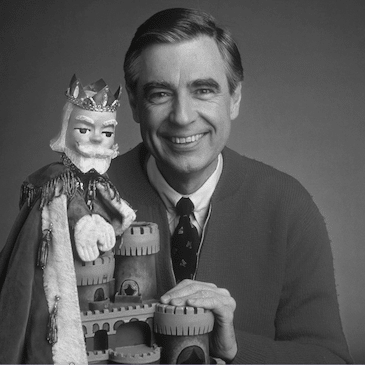
Hours: 10 a.m.–5 p.m. | Fri. & Sat. till 8 p.m.
- Educators
- Field Trips
- Grades 7 to 12
- College and University Programs
- Professional Development
- Get in the Game
- Scouts
- Woodbury School
- Blog
- Journal of Play
- G2
- Visit
- Hours and Admission
- Group Admission
- Directions and Parking
- Events Calendar
- Membership
- Accessibility
- Donation Requests
- Parties and Rentals
- Dine and Shop
- Digital Map
- Exhibits
- Museum Exhibits
- Online Exhibits
- National Toy Hall of Fame
- World Video Game Hall of Fame
- Skyline Climb
- Play Lab
- Butterfly Garden
- Carousel and Train
- Collections
- Search Collections
- Brian Sutton-Smith Library & Archives of Play
- International Center for the History of Electronic Games
- The National Archives of Game Show History
- Research Access
- Research Fellowships
- Donate an Artifact
- Preservation
- Support
- About
About
The Strong explores the ways in which play encourages learning, creativity, and discovery, and how it illuminates cultural history.

About The Strong Museum
The Strong is one of the largest history museums in the United States and one of the leading museums serving families with highly interactive exhibits and programs. The Strong houses the world’s largest and most comprehensive collection of historical materials related to play.
Play has the power to teach, spark imagination, and create joy. Let’s play!
Margaret Woodbury Strong
Margaret Woodbury Strong, a prolific collector of everyday objects, especially dolls and toys, founded The Strong in 1968 under the name “Margaret Woodbury Strong Museum of Fascination.”
Press Room
The Strong is centrally located at One Manhattan Square in downtown Rochester, New York. Explore resources for press and media outlets, and find contact info here.
The Strong's Mission and Vision
MissionWe study and explore play to illuminate the American experience in all its rich diversity and the broader human story. Through play, we encourage learning, nurture creativity, promote discovery, and transform the lives of people of all ages.
VisionWe strive to be the global leader in exploring, preserving, and sharing the history of play to promote play’s vital role in all our lives.
To learn why and how The Strong became the first collections-based museum in the world devoted solely to the role of play in learning and human development, and for more on the ways in which play illuminates cultural history, read “The Why, How, and What of a Museum of Play: An Interview with George Rollie Adams.”
Museum HistoryMargaret Woodbury Strong, a prolific collector of everyday objects (especially dolls and toys), founded The Strong in 1968 under the name “Margaret Woodbury Strong Museum of Fascination.” Before she died in 1969, she bequeathed her considerable estate to help support the museum, and 13 years later it opened in a new 156,000-square-foot building on 13.5 acres in downtown Rochester.
Nearly all the things Mrs. Strong collected were mass-produced, so initially the museum used them to examine the ways in which industrialization has changed everyday life. Within a few years, this focus evolved into an examination of the consequences of progress, the rise of the middle class, and expressions of identity.
After in-depth market research and strategic analysis in the mid-1990s, the museum significantly increased programming for families. This led to major growth in attendance, and in 1997, the museum added a new glass atrium entrance housing an operating 1918 carousel and an authentic 1950s diner.
In 2002, The Strong acquired the National Toy Hall of Fame from A. C. Gilbert’s Discovery Village in Salem, Oregon. The next year, following additional market studies, extensive scholarly and institutional research, and rigorous programmatic and financial planning, the museum determined to concentrate fully on its core collections of toys, dolls, and other artifacts of play and refined its mission accordingly.
Between 2004 and 2006, the museum nearly doubled its physical footprint to 285,000 square feet, making it one of nation’s largest history museums. The museum’s expanded size, coupled with its high levels of interactivity, also distinguish it as second largest among institutions self-designated or otherwise known as children’s museums. The additions included one large and two smaller wings, two new museum shops, a food court with three restaurants, a new state-of-the-art collections storage facility, and a number of dynamic new exhibits. These include Reading Adventureland, Field of Play, and Dancing Wings Butterfly Garden. During this same period—in consequence of its refined mission and expanded scope—the museum changed its name to Strong National Museum of Play.
In the late 2000s, as interpretive activities and collections continued to grow and evolve, Strong National Museum of Play introduced several nationally significant initiatives that have further positioned the institution as a leader in the field of play. In 2008, the museum began publishing the American Journal of Play, a scholarly publication with a global audience. In 2009, the museum launched the International Center for the History of Electronic Games and began building what has become the most comprehensive public collection of video games, other electronic games, and related materials anywhere, currently numbering more than 55,000 items. Also in 2009, the museum renamed its library and archives the Brian Sutton-Smith Library & Archives of Play, after the nation’s most celebrated play scholar, whose personal library and papers are housed there.
In 2010, the museum rebranded as The Strong, encompassing 100,000 square feet of exhibitions; a wide array of public, school, and other programs and activities; and the International Center for the History of Electronic Games, the National Toy Hall of Fame, the Brian Sutton-Smith Library & Archives of Play, the Woodbury School, and the American Journal of Play.
In 2015, the museum established the World Video Game Hall of Fame to recognize individual electronic games of all types—arcade, console, computer, handheld, and mobile—that have enjoyed popularity over a sustained period and have exerted influence on the video game industry or on popular culture and society in general. That same year, the museum elevated its position as a “must-see” national destination with the opening of the state-of-the-art Toy Hall of Fame exhibit, which houses both The Strong’s National Toy Hall of Fame and the Toy Industry Association’s Toy Industry Hall of Fame.
In 2016, The Strong announced a partnership with the Academy of Interactive Arts and Sciences (AIAS) and opened an exhibit honoring the game-changing individuals and award-winning video games recognized for achievement by AIAS. Also in 2016, G. Rollie Adams, PhD, retired as president and CEO of the museum after nearly 30 years of dedicated service that saw sustained and exponential growth of the museum’s programs, attendance, and physical footprint. In honor of his accomplishments, The Strong’s Board of Trustees named Adams president and CEO emeritus, and the museum established the G. Rollie Adams Research Fellowship program to advance play research.
On January 1, 2017, Steve Dubnik, entrepreneur and 16-year member of The Strong’s board of trustees, succeeded Adams as president and CEO. That month, the museum published Play for Life: Play Theory and Play as Emotional Survival, an edited compilation that contains, among other features, the final book-length manuscript of Brian Sutton-Smith, preeminent play scholar of the late 20th and early 21st centuries.
In 2018, The Strong broke ground on a major expansion, the centerpiece of an all-new Neighborhood of Play. The museum completed the first phase of the project—a playfully designed parking garage—in 2020. The following year, the museum broke ground on the second phase of the project, which includes a 90,000 square-foot wing.
In the summer of 2023, The Strong opened the expansion to the public, unveiling a new welcome atrium, ESL Digital Worlds (High Score and Level Up), the Suzanne & Tony Goodman Gallery, and the Hasbro Game Park. A building to connect the new space to the parking garage—the Portal of Play—was added.


Learn why play is important and how it helps us grow from museum staff.
More Resources
The Strong is a highly interactive museum devoted to the history and exploration of play—it is the nation's museum of play!

When children pretend, they’re using their imaginations to move beyond the bounds of reality. A stick can be a magic wand. A sock can be a puppet. A small child can be a superhero.
Fred Rogers, American television personality, 1928–2003Support and Affiliations
The Strong is an independent 501(c)(3) not-for-profit educational organization. It is funded in part by the Margaret Woodbury Strong Trust but also depends on private contributions from individuals, corporations, and foundations, and upon competitive grants from public agencies such as the Institute of Museum and Library Services (IMLS) and the New York State Council on the Arts (NYSCA).
The Strong is accredited by the American Alliance of Museums and is an institutional member of AAM, the American Association for State and Local History (AASLH), the Association of Children’s Museums (ACM), and the Museum Association of New York (MANY).





